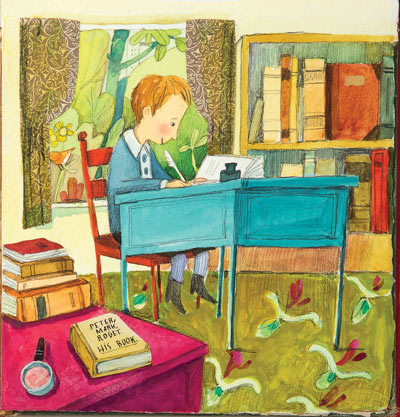As a new school year begins, four new titles reveal that teachers can but do change lives in classrooms every day. Chronicling how teachers adapt to change, improve their methods and even learn from their own students, these books will appeal to all those interested in the impact of education.
LEARNING TO TEACH
Do some teachers have natural qualities that make them more effective educators? Elizabeth Green, editor-in-chief of website Chalkbeat New York, explores that question in Building a Better Teacher: How Teaching Works (And How to Teach It to Everyone). Expanding on an essay she wrote for the New York Times Magazine, Green gives a historical overview of studies on teaching, from the perspectives of such experts as behavioral and cognitive psychologists, educational specialists, economists and entrepreneurs. Among those cited are noted individuals in the field of education, including Doug Lemov, author of Teach Like a Champion, and mathematics teaching specialists Magdalene Lampert and Deborah Loewenberg Ball. Green also reflects on whether such recent developments as No Child Left Behind, Race to the Top and Common Core have influenced teacher performance. Using numerous examples of instructional methods and students’ reactions to math problems, Green shows how teaching is anything but natural work. In this era of high-stakes standards, with an emphasis on accountability but little guidance, the author makes the case through thoughtful details that great teachers are made, not born. As Green advocates for practice-based teacher education, she brings hope and renewal to the field.
OUR CHANGING SCHOOLS
Just as he reflected on the state of dying bookstores in The Yellow-Lighted Bookshop, Lewis Buzbee turns to the plight of declining public schools in the slim yet moving Blackboard: A Personal History of the Classroom. Admittedly an average student, Buzbee attended California public schools when they were ranked first in the nation. Now these same schools scrape the bottom at 48th or 49th. To try to understand this fall, the author returns to the same schools he attended as a child and teenager. As he recalls visceral moments during his education, from learning to read with Ginn and Co. textbooks to the terror of locker room nakedness in P.E., Buzbee offers short, appealing histories of such staples as kindergartens, blackboards and school buses, and explains how they transformed the American school environment. He never forgets the most important asset in any school—the teachers—and recalls how they changed his own life after his father died. But in this era of budget cuts, metal detectors and teachers forced to take second jobs to make ends meet, Buzbee also draws attention to the social, political and economic changes needed to create better schools. Part personal recollection, part history lesson, part call to action, Blackboard is all eloquence.
BACK IN THE CLASSROOM
When his wife changed jobs and his family needed health insurance, Garret Keizer returned, after a 14-year hiatus, to teaching at the same high school where he started his career 30 years earlier. A contributing editor of Harper’s magazine, author (Privacy) and a former Guggenheim Fellow, Keizer documents a one-year stint as an English teacher in Vermont’s Northeast Kingdom, one of the state’s poorest regions, in Getting Schooled: The Reeducation of an American Teacher. This candid month-by-month account describes his time with his working-class students, as he wonders what they will do for employment and how to prepare them properly. Trying to make connections with his students and peers and keep his “ancient” teaching techniques alive—despite his students’ reluctance to consult books and a decimated library replaced with computers for reading—he finds education vastly transformed since he last set foot in a classroom. Much of Keizer’s memoir is dedicated to the biggest changes: uniform instruction (i.e., state and Common Core standards) and computerized productivity tools. Ironically, the latter make him devote more time to data and less time to educational substance. Readers will empathize with Keizer’s bittersweet feelings in June, when school is out and another year is not an option.
CONTINUING EDUCATION
When Kim Bearden began her career as an educator, she assumed she would be the one doing all the teaching in her classroom. Instead, she recognizes the insight and wisdom she’s gleaned from her students in Crash Course: The Life Lessons My Students Taught Me. Drawing on 27 years of experience as a teacher, curriculum director, middle school principal and cofounder of the Ron Clark Academy (an innovative, internationally renowned middle school in Atlanta), Bearden offers anecdotes, analogies and examples of creative problem-solving. Related in Bearden’s down-to-earth voice, these honest and uplifting lessons show the importance of relationship building, tenacity, gratitude and even magic and play. Bearden explains how she and her students “do see color,” embracing and celebrating differences in culture. She shows that we sometimes have to identify the greatness in others before they see it for themselves, and that our individual talents, which may seem like misshapen puzzle pieces, can fit together to make a beautiful picture. While the author gives a teacher’s perspective, the recommendations here are applicable to anyone who works with youth or the public.
This article was originally published in the August 2014 issue of BookPage. Download the entire issue for the Kindle or Nook.
















